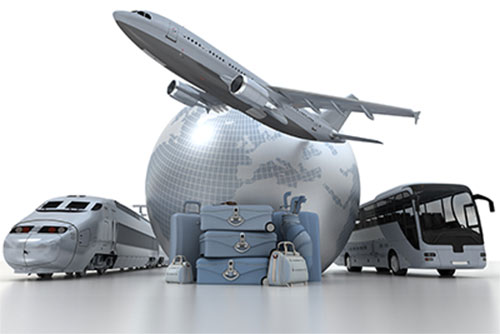Different transportation industries all face similar yet unique challenges when it comes to protecting on-site assets and their facilities. These include limiting access to buildings, vehicles and/or pooled assets, ensuring only specified employees are using them appropriately, controlling inventory, limiting damage to employee- or contractor-issued equipment and mitigating risk.
Intelligent key and asset management solutions provide superior process control for companies looking to improve in these areas. A quality program for transportation facilities would include key and fleet management (dockside vehicles), along with protection of ancillary tools, and other assets like pooled radios and tablets. This could include:
- Keys for equipment, secure areas and facilities;
- Controlling data rack keys;
- Vehicle fleets;
- Tools and specialist equipment;
- Radio handsets; and
- Laptops, PDAs and handheld data terminals.
The Air
If you look at a specific airline, for example, controlling access to airside ground vehicles is critically important towards preventing damage, ensuring accountability and making sure the right people are driving the right vehicles. But, what if it could be taken a step further through automation? What if you could log fuel, mileage and faulty issues with vehicles that would notify the maintenance department and integrate into the existing work order system that could automatically generate an email or work order letting someone know “the windshield wipers need replacing?” How much risk is an airline exposed to with keys left inside of the vehicles out of convenience How much would the life of a fleet be extended if you could issue vehicles based on the lowest mileage, balancing out use and thus extending fleet life?
A proper key management program creates accountability and drives process – the system tracks who has been using keys, when they are in use, and when they are returned, all at a glance. You know if the right people have the keys to the luggage vehicle or whether someone took it for a joy ride.
No company wants to question their employee’s integrity, but the reality is that internal theft and damage affects the transportation industry day in and day out. A strong key management program for assets drives accountability and creates inherit process control. No more chasing keys or assets down. No more issuing master keys to employees that shouldn’t have them out of convenience!
The Use of Radios
Transportation facilities often have lockers that hold assets, like high frequency radios, which can cost $1,000-$1,500 apiece. They could personally issue these assets and find them lying around the facilities, maybe charged, maybe not. Imagine losing 3-4 of those a year across 5-6 different locations. Whether theft or carelessness is the culprit, or damage causes the radio to be inoperable, those are significant losses to your bottom line that add up quickly...and that’s just the ones you know about!
Tracking the radios, knowing when and where they are and who is using them is critical to managing those and other assets effectively. How much time is being lost because employees go back and get a new radio because the one they grabbed at 9 a.m. is dead by 11 a.m.? Do you know how many people someone can chat with in the time it takes to walk across a 100,000 sq. ft. facility? Controlling this process allows you to control your costs.
The Wide-open Seas
If you take cruise ships as an example, the number of sensitive keys that need to be protected is more than you might expect. Beyond protection of costly equipment, additional assets (and even customers), things like food and beverage keys and casino keys can be a financial black hole for organizations if not controlled properly.
A pressing issue for the cruise industry is controlling access to keys and master keys outside normal working hours. Some personnel are given 24-7 access to master keys. This lends itself to potential misuse and enormous risk! Controlling access during off-shift hours is critically important to mitigate these risks for the cruise and other similar industries. A properly designed electronic key management system can control access AND make sure those keys are available quickly in case of an emergency.
Robust, Customizable Solutions
Though the challenges are both similar and unique throughout the transportation industry, robust solutions can be customized to each individual airport, train or bus station, for example. This allows for innovative and tailored solutions that solve real world problems.
When you think of any transportation hub, station or facility, most of which are operating 24 hours a day, and all the personnel working the different areas – on the tarmac, out in the field, inside the terminal, luggage handling – there can be thousands and thousands of employees coming and going, checking in, moving from one section to another, or taking a break. Can we truly expect a supervisor or paper key log to mitigate risks at an appropriate level? This presents significant opportunities for breakdowns in security or processes in loss prevention and risk mitigation.
Some food for thought to plug into any P&L and realize real dollars and cents: On average, the implementation of a properly deployed electronic key or asset management systems results in a 30% reduction in fleet vehicles or assets such as pooled radios. How much is that worth?!
You can’t manage what you can’t measure. A quality solution allows you to manage your business, while it manages your processes, sensitive keys and assets. Don’t let your profits jump on the next plane out.